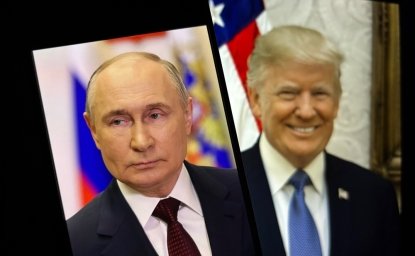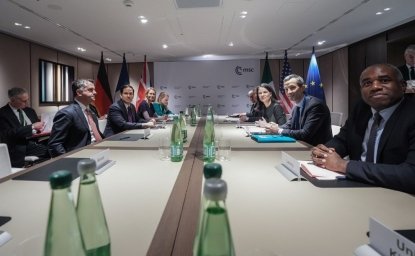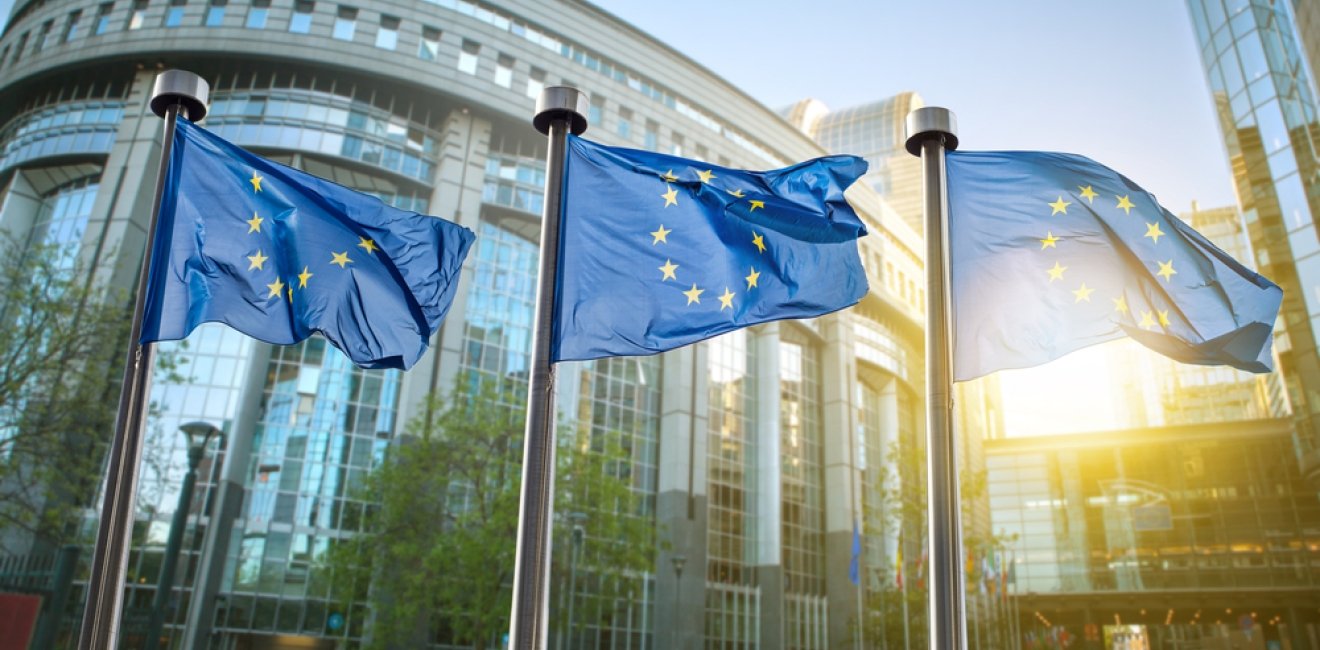In Secretary of State Madeleine Albright’s class at Georgetown University, she likened each element of U.S. power - development aid, sanctions, bilateral diplomacy, multilateral diplomacy - to a tool in the U.S. problem-solving toolbox. When faced with a challenge, the United States can employ one or more of these tools. With the launch of the Strategic Compass for Security and Defence, the European Union is adding a handful of new tools to its own toolbox, to better respond to current and future challenges.
Promising a “quantum leap” in decisive security matters in the next decade, the EU is stepping into its role as a security provider and global actor. The document is significant for the EU; it can be seen as a parallel to the United States’ National Security Strategy in its scope.
A comprehensive creation process
This is the first time in EU history that a threat analysis was conducted with each member-state inputting its strategic priorities. The Strategic Compass began in June 2020 as an attempt to align EU defense and security goals between the 27 member-states. Therefore, national priorities were translated into European priorities through the diplomatic process. The major threats the EU faces were identified as great power competition, potential instability in its neighborhood, and transnational threats, including cyber and hybrid attacks.
Staying relevant
Nevertheless, the document realizes the fluidity of the geopolitical environment and the shifting nature and magnitude of threats. Thus, the Strategic Compass promises to be the first step in regular evaluations of the evolving strategic environment, stipulating that a new threat analysis will be conducted every three years, allowing changes to the EU’s strategy.
The document’s existence is proof that the EU is positioning itself to better respond to strategic challenges. Russia’s invasion of Ukraine began right at the end of the Strategic Compass process. Although the document acknowledges the crisis in its introduction, it was clearly drafted before war returned to the European continent. As such the document is not a reflection of the war. It is likely that the next iteration of the threat analysis will more prominently feature Russian tactics on display in Ukraine. Nevertheless, many aspects of the Strategic Compass will better prepare the EU for the tense geopolitical environment brought about by the emerging great-power competition.
New tools in the toolbox
The Strategic Compass contains a myriad of timelines and actionable items. Among them is the goal that by 2025 an EU Rapid Deployment Capacity of 5,000 troops will be ready.
The specificity and concrete timelines proposed in this document demonstrate the resolve of the European Union to become a power broker in the next decade. The schedule, while ambitious, is not impossible provided the interest for greater European sovereignty continues among EU member-states.
Further, the Strategic Compass creates a new Hybrid Toolbox and Response Teams, enhances the Cyber Diplomatic Toolbox and Cyber Defence Policy, Foreign Information Manipulation and Interference Toolbox, and an EU Space Strategy for Security and Defence. The document notes that hybrid threats are growing in scale and scope, specifically mentioning that China and Russia have utilized hybrid tactics. The Hybrid Toolbox will allow for a faster, coordinated attribution of attacks. The Strategic Compass will further strengthen the existing Cyber Diplomatic Toolbox, which has grown from a budget of €11 million in 2017 to almost double to €21.7 million in 2020. Enhancing the toolbox, solidifying the EU’s Joint Cyber Unit, further developing the EU’s Cyber Defense Policy will be instrumental to deter cyber attacks. The Strategic Compass outlines how information manipulation threatens not only Ukraine but aspiring member-states; as a response, a new toolbox being developed in coordination with the European Democracy Action Plan. Many of the tools highlighted in the Strategic Compass, such as the Cyber Diplomatic Policy and the EU Space Strategy, have either been underutilized or underdeveloped, but the changing nature of conflict, as is prominently on display in Ukraine, calls for the EU to sharpen and enhance these tools.
Geographically, the Strategic Compass references security on a global level. However its emphasis is on the transatlantic relationship and the regions neighboring the EU reflecting their special importance to the bloc. Specifically, it calls for a strengthening of NATO-EU cooperation both on the political and the military level. It also calls for continuing the momentum created by the 2021 EU-US Summit Statement, a political declaration of EU-US partnership across multiple sectors. Further, regarding the EU’s neighboring regions, focus is placed on Africa, particularly the Sahel and West Africa, and the EU’s immediate east. Indeed Africa has repeatedly been identified as a region of primary geostrategic importance for the EU as instability in the continent crosses the Mediterranean; while Europe’s east, from Moldova to Georgia, is facing Russia’s belligerency and destabilizing acts.
A stronger transatlantic partner
The Strategic Compass does not seek to replace or undermine NATO. Instead, as the document stresses multiple times, by implementing it, the EU will become a more valuable partner for both NATO and the United States. The document is underpinned by multiple major announcements for increased defense spending in light of Russia’s invasion of Ukraine. For the United States, this means the EU will do more to provide for its own security.
As Stefano Sannino the Secretary General of the European External Action Service recently said during an event at the Wilson Center, “The aggression of Russia against Ukraine has generated a sense and need of unity within the European Union and between the European Union and the United States; and I would say the transatlantic community more in general.” The Strategic Compass will contribute to that unity.
Avoiding bumps ahead
Nevertheless, the EU needs to ensure that its mechanisms contribute effectively to transatlantic unity.
Perhaps the most striking stipulation of the Strategic Compass is the creation of a 5,000-strong force able to swiftly deploy to non-permissive environments. The force is to include air, land, and maritime components along with strategic enablers. It will be enabled through the substantial modification of the EU Battlegroups and the member-states that will participate with troops and capabilities will be pre-identified.
However, NATO currently has the NATO Response Force (NRF) which can start deploying globally within one to four weeks and a Very High Readiness Joint Task Force (VJTF) that can start deploying within two days. EU member-states that are also part of NATO are major contributors to the NRF and VJTF. Therefore, there is risk of operational redundancy between the EU and NATO’s components.
Additionally, due to the high number of initiatives put forth by the Strategic Compass the risk of some of them falling behind schedule or underdelivering is present. Nevertheless, besides the obstacles ahead, the importance of the document for the geopolitical future of the EU should not be underestimated.
A step in the right direction
The Strategic Compass is currently a guiding document – a framework for transforming the EU, traditionally an economic and, more recently, a political instrument, to include a stronger security element. The war in Ukraine has led European countries that had grappled with balancing military power and welfare systems to now put more effort into their security capabilities.
If the implementation of the Strategic Compass reflect the impressive political effort it took to draft it, the EU and its neighboring regions stand to benefit.During an era in which war has returned to Europe and traditional geopolitical dynamics are shifting, the Strategic Compass has the potential to become a roadmap for the EU’s future as a security provider and markedly contribute to Europe and its neighboring regions’ security and prosperity.
Authors


Global Europe Program
The Global Europe Program is focused on Europe’s capabilities, and how it engages on critical global issues. We investigate European approaches to critical global issues. We examine Europe’s relations with Russia and Eurasia, China and the Indo-Pacific, the Middle East and Africa. Our initiatives include “Ukraine in Europe”—an examination of what it will take to make Ukraine’s European future a reality. But we also examine the role of NATO, the European Union and the OSCE, Europe’s energy security, transatlantic trade disputes, and challenges to democracy. The Global Europe Program’s staff, scholars-in-residence, and Global Fellows participate in seminars, policy study groups, and international conferences to provide analytical recommendations to policy makers and the media. Read more

Explore More
Browse Insights & Analysis
Trump Speaks with Putin in Effort to End Russia-Ukraine War

From Partner to Ally: Sweden’s First Year in NATO

“Security, Europe!”: Poland's Rise as NATO's Defense Spending Leader

